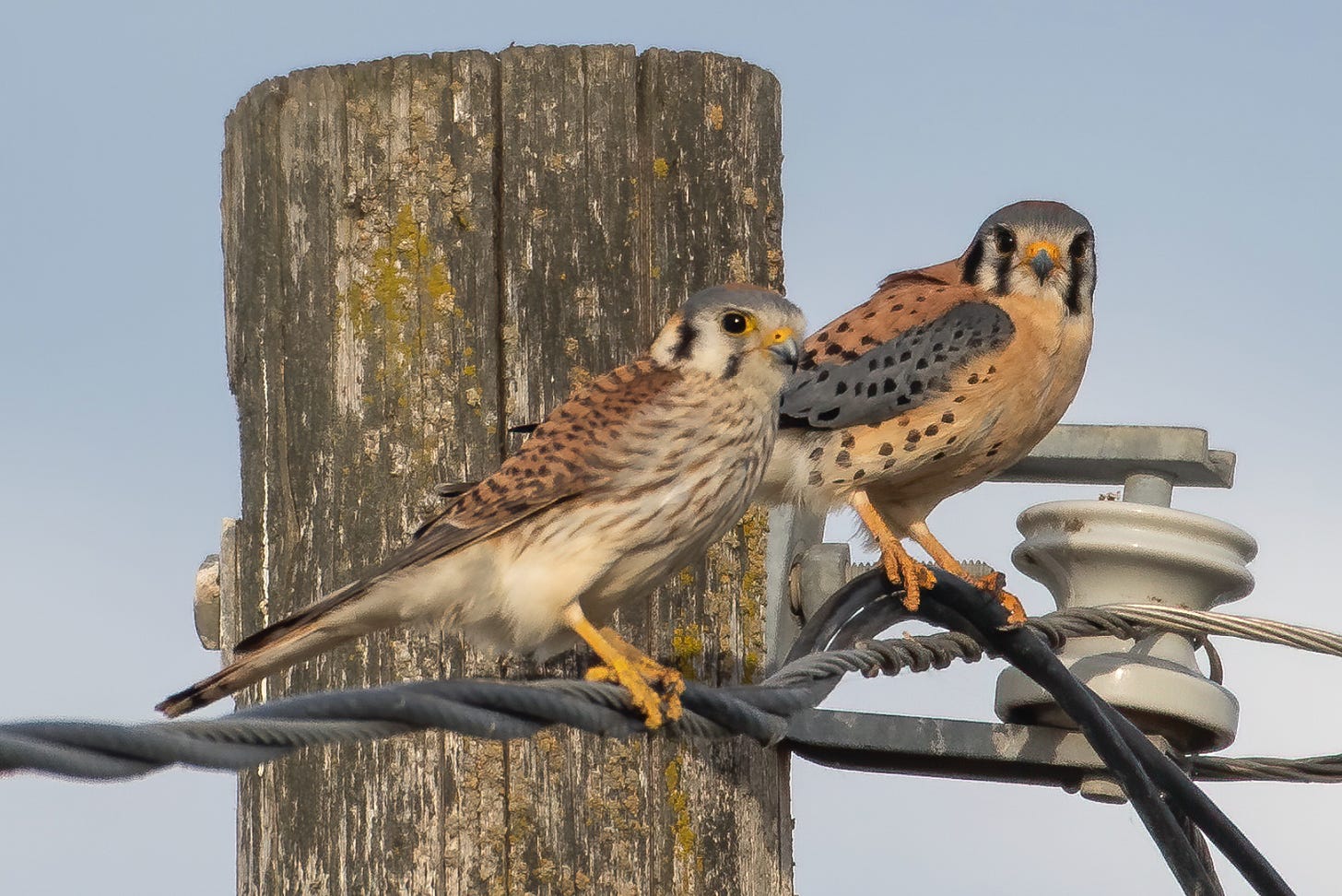Hi! We’re back after a lil’ break! How are you? Sufficiently rested? Batteries charged?
No? To the best of your abilities, cute mass of energy-depleted cells: lean out, lie down, treat thyself. Not taking advice from no bird blog? How’s about Audre Lorde?
“Caring for myself is not self-indulgence, it is self-preservation, and that is an act of political warfare.” - The Great Gambda Adisa herself
MICRO-SEASONINGS JUNE 24—JULY 14
Naps-forward or no, we were still on-notice. Japanese micro-seasons that we surfed from our couch grooves include Irises bloom, Crow-dipper sprouts, Warm winds blow and First lotus blossoms. As for McGolrick Park, perhaps New York City and even larger swathes of the eastern US, we noticed—
Butterfly Milkweeds bloom • Barn Swallows feast • Shrubby St. John’s-worts flower • Lightning Bugs peak • Staghorn Sumacs berry • Annual Fleabanes blossom • Purple Coneflowers bloom • Fall Phlox bloom • Mockingbirds defend nests • Wild Bergamots bloom • Collective, work-borne burnout • Fish Crows fledge
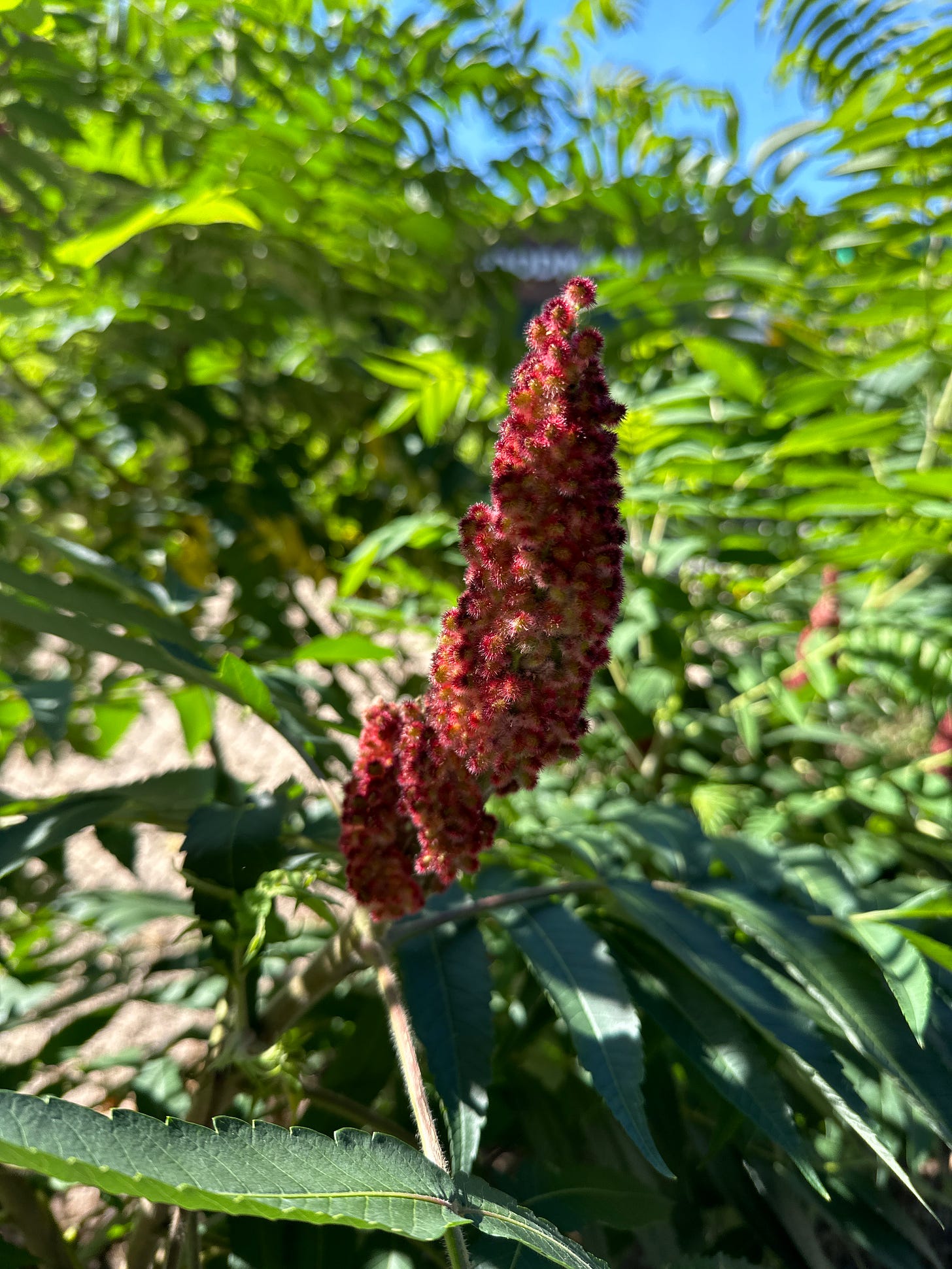
We’ll declare this micro-season’s “official” name at year’s end. Stay tuned-in (to nature).
Native American tribes used parts of butterfly milkweed for food. In colonial America, dried leaves were made into a tea to treat chest inflammations. Hence its alternative name: pleurisy root
Lightning Bugs are having a Brat Girl Summer unto themselves. Read why here
The “Uses” section of Wild Bergamot’s Wiki is impressive and inspiring
Don’t confuse Shrubby St. John’s wort with its famous relative, St. John’s wort—though the two share a highly active chemical compound: hypericin. St John's wort has been used in traditional medicine since at least the first century AD. In modern times, its use as an antidepressant has been the focus of numerous studies and clinical trials. Before you go rogue munching, note that its active ingredients can be very harmful or even lethal when taken alongside traditional medicines
JULY 6 & July 13 2024 — SATURDAYS
Conditions: Wet w/ Sweat & Rain Advised • Attendance: 46 Holiday Holdouts & 38 Storm Chasers • Vibrations: Down-y for life & Fish-y
Saturday birds: Blue Jay · Fish Crow · Chimney Swift · Barn Swallow · Common Grackle · Laughing Gull (flyover) · Downy Woodpecker · Northern Mockingbird… And the virtually always present in urban parks like McGolrick: Rock Pigeon, European Starling, American Robin, House Sparrow and Mourning Dove.
Favorite Snaps:
MICRO-LESSON: NYC BIRDS OF PREY
Like some talon-y, bloodletting cuddle, let’s get cozy with 4 of NYC’s—and the US’s—most common carnivorous birds. Ready? Ready.
Red-tailed Hawks’ uptick in summer visits to McGolrick Park inspired this lesson. Why the bump? Up to four fledgling hawks linger atop nearby McCarren’s field lights, where they were born. Babies gotta eat!
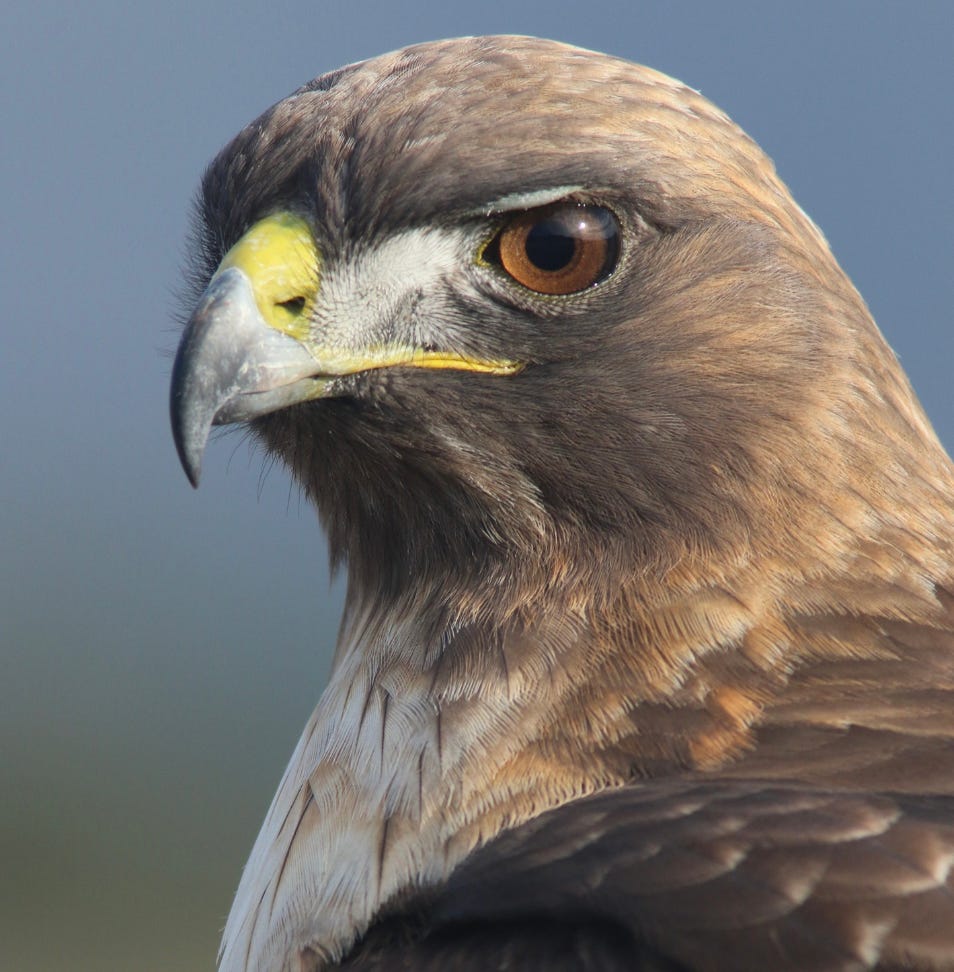
Okay so first and foremost: Red-tailed Hawks are the most common bird of prey in North America, full stop. A stat that flies around goes: If you see a large hawk, 9 times out of 10 it’s a red-tail.
We like those odds. Let’s still elaborate.


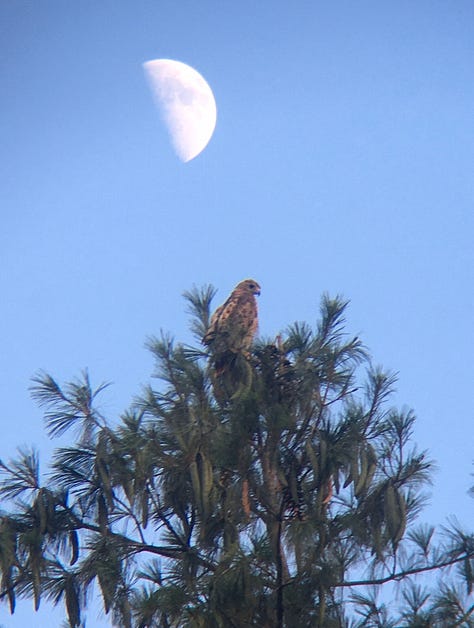
Seen from afar, Red-tailed Hawks are big! About the size of small-medium dogs. Their primary colors are browns and whites, but patterning can vary. For example, RTH’s west of the Rockies can be much browner overall. This can all confuse new birders. Instead of plumage, try to get a feel for their shape and lüks.



Zoomed-in a bit, what do we see? Classic, kinda bulky, handsome hawk profile. As for their namesake tails—they’re short relative to other bird of prey species. Thinly striped or red-orange from the back and side. Defo red-orange from below—but the right direction/angle/light is key. Don’t rely exclusively on color.



In-flight you’re looking for A) fanned red-orange tail B) classic circling, death from above soar C) small, bold shoulder marks on under-wings’ leading edges (see rightmost photo).
Peregrine Falcons are, famously, the fastest animal found on our planet. They’re also more common in American cities than you might expect.
The odds of getting so close-up a look at a Peregrine are low, but threelark’s above photo is useful for anticipating what one sees from afar. Chiefly:
Falcon mask that looks like a helmeted head over white
Dappled off-white fronts + dark blue-gray backs. These can read as white + near-black, respectively
Peregrines are just smaller than Red-tailed Hawks. When perched, their pointy wings can look dangly and long.


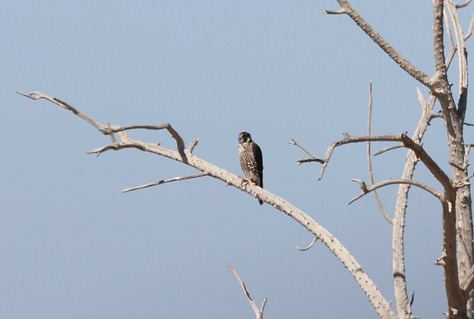
As for in-flight, Peregrines occasionally soar like red-tails. But they mostly just look thinner and sharper, with slightly pointed wing-tops. That all plus their sometimes juuust visible helmets, and the subconscious animal sense that you’re not in the presence of a red-tail—we know it sounds cosmic and it is, ok?—might mean you’re peregrinding. (Not a word.)



American Kestrels are small. Smallest falcon in the US, yo. Seen a Pigeon? Kestrels are smaller. Seen a Mourning Dove? Kestrels are the same size.
That latter similarity can make things tricky for new birders because rarely to never do you get views so pristine as the one above. Most often, you just notice a small-ish, perched bird. Scenes like these:


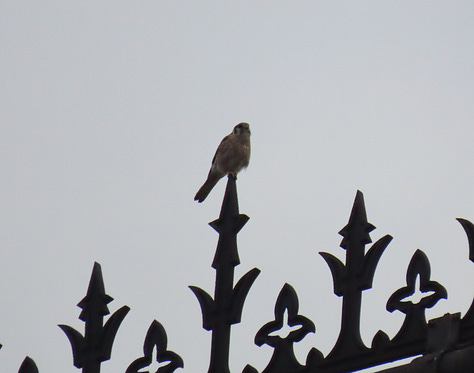
Kestrel tells? Big head + undefined neck + diffo beaks than doves. Juuust visible peregrine-like falcon mask sideburns in most light.
Here are some Mourning Dove profiles for comparison:


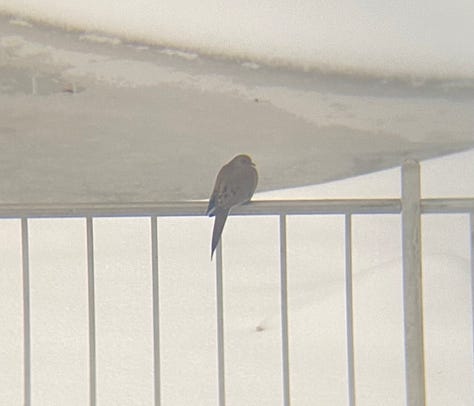
In-flight, Kestrels are, besides being yes kinda Mourning Dove-ish, almost big bat-like (foreshadow) in their flappy, pointy, slender wingedness. Long, but sometimes fanned tails too. See:
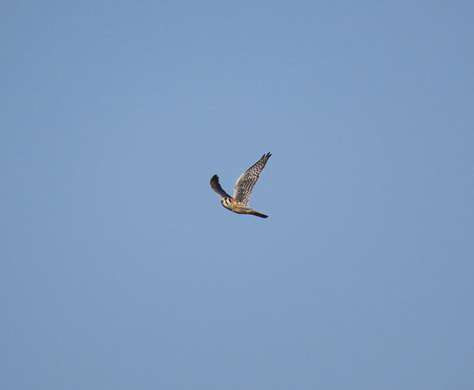
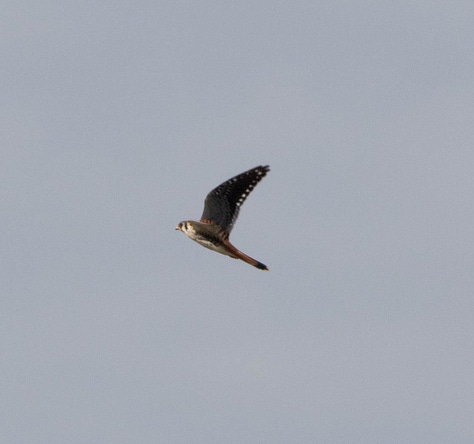

Trick with Kestrels is to A) Scan aerials for their small, perched bodies + rule out Mourning Doves or B) Keep your ears open for their parrot-like klee klee klee call, then hope to glimpse their lithe bods in-flight.
Cooper’s Hawks are virtually absent from McGolrick Park in Summer, but do haunt NYC’s bigger parks year-round. That wasn’t a misspelling: haunt, not hunt, was intended—Cooper’s dart among and over trees like avian specters.
Boo. You’re dead.



Look for Coops’ looong, thickly striped tails, their gray and dusty orange bodies. Note their dark topped, buzz-cut vibration head shapes. Watch out for the youngins— who rock red-tail-ish colors. Always look for these birds’ long, thick-striped tails.

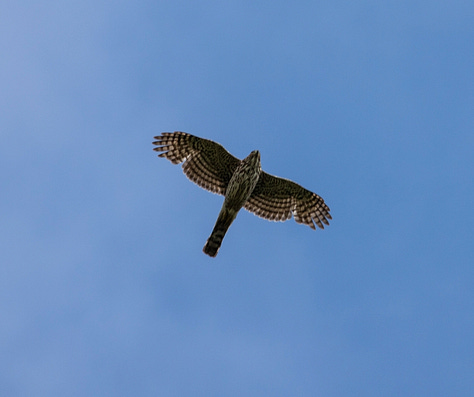

Coops are also smaller and svelter than red-tails—about the size of peregrines. And instead of high-soar circling, Coops hunt relatively low and actively, scouring trees and their tops. Their flap-flap-glide flying style—plus again, long tail—give flying cross. When their tails do fan they shows 2 - 3 thick stripes.
These are the common birds of prey one need master to virtually co-own New York City’s skies. This seem hard? It’s always easier IRL. Go outside now. Take bad pics. Try. You were born to commune with your creature cousins.
LOCALS ONLY: Close the screen on which you read this right now and go visit McCarren Park’s red-tailed hawks here. Then Go Under the ‘K’. Peregrines breed here. Scan the bridge’s underside for perched birds. Wait for fly-ins—mostly on the Queens side of the water. Gaze long enough and you’re virtually guaranteed an ear-to-ear pere-grin. (Sorry)
While we focused on the top 4, if we were to do the entire commonest US birds of prey thing, next on the list would be red-shouldered hawks, merlins, sharp-shinned hawks, ospreys (our lesson here), northern harriers, and bald eagles. These other 6 are rarely or never viewable at McGolrick—more location specific around NYC
ANNOUNCEMENTS

We’re collaborating with NYC Bird Alliance field biologist, Nic Comparato—who studies bat bioacoustics—to bring you … BAT GIRL SUMMER.
From Little Browns to Big Browns to Hoaries to Eastern Reds—several bat species can be found everywhere in New York City this time of year. (They’re so Julia.)
BAT GIRL SUMMER details to come. For now, block Saturday, August 3rd, ~8:30PM.







